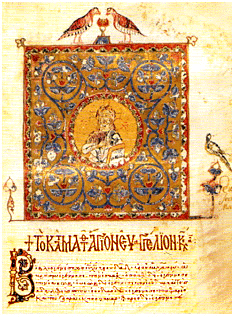...Best of Sicily presents... Best of Sicily Magazine. ... Dedicated to Sicilian art, culture, history, people, places and all things Sicilian. |
by Daniela Paglia | ||
Magazine Index Best of Sicily Arts & Culture Fashion Food & Wine History & Society About Us Travel Faqs Contact Map of Sicily |
Little of it remains in documented form, but the earliest known prose written in the Italic (Romance) language of Sicily was composed only during the twelfth century. By that time, under Norman influence, liturgy had become Latinised. The "Sicilian" vernacular languages encountered by the first Normans to settle the island in the eleventh century (particularly Arabic, Byzantine Greek and some use of the Latin Vulgate) were, for the most part, fading from the linguistic landscape, however slowly. The use of Norman French and Church Latin were, in effect, filtering down to the masses. Precisely how this happened cannot be known with absolute certainty,
but we know much of medieval Sicilian society. In the Roman and Byzantine
periods the island's small literate element had read (and written) both
Greek and Latin, and the former was actually the more popular spoken language
even in the days of the Roman Empire. That was true in the more eastern
regions of the Empire well into Christian times (despite what is presented
in films such as The Passion of the Christ). The Church kept written language
alive, and until the Normans arrived, and for some time thereafter, the
Sicilian Church still had strong "Byzantine" (Orthodox) elements,
even if most bishops were Latin (Roman Catholic). The Greek manuscript shown
here (at right) is a page from the The Arabs, through mass immigration, introduced a new linguistic element into the milieu which became Sicilian. Theories abound, but it appears most probable that many twelfth-century Sicilians spoke at least two languages --Greek and Arabic-- and eventually the Latin tongue which became Medieval Sicilian. (Consider that even today there are those in Piana degli Albanesi and other towns who speak Italian, Albanian and Sicilian.) By the thirteenth century (Frederick's reign) the Latin tongue --Ciullo d'Alcamo's language-- was gaining ground. Under Norman auspices, Sicily's linguistic landscape had been transformed in just six generations. (In a parallel development, the Norman conquest of England "Latinised" the language of the Anglo-Saxons with Norman-French influences.) Mosques and Orthodox churches were becoming a rarity, and with their disappearance the descendants of the Muslims and Orthodox adopted "Sicilian" as their common language. In the Benedictine monasteries Latin was the language of the scribes. The Sicilian spoken by common folk was a Romance language having an Italic structure, with numerous Arabic and Greek words and a smattering of Norman French and even Longobardic. It was not the fluid, quasi-Italian Sicilian we know today, but its remote predecessor, bearing the strong mark of Arabic --though Ciullo d'Alcamo's writings bear some striking similarities to the medieval languages then spoken in central Italy. The poet, of whom little is known, appears to have resided, or held land, in the Sicilian town of Alcamo. His given name seems to derive from Cielo from Micele (medieval Michele for Michael). His only complete surviving work is the Dialogue, variously known as Rosa fresca aulentissima, for its first phrase (reproduced here), or il Contrasto. This romantic poetry was probably composed before the death of Frdederick II (1250). It has been suggested that the authors of the Sicilian School were notaries or scribes rather than full-time court poets. Differing from the majority of Sicily's chroniclers (who were clerics), they took their inspiration from the wandering troubadours. Ciullo and his poem are commended by Dante in his De Vulgari Eloquentia (On Eloquence in the Vernacular) written early in the 1300s. By then, the" international" importance of the Sicilian language had declined with the multicultural, polyglot kingdom that spawned it. The Sicilian of today, though distinctive, is but a shadow of this medieval tongue, and only rarely has it seen print (the Bible, the world's most popular work, has never been published in Sicilian). More importantly, although Francis of Assisi wrote his Canticle in a form of vernacular Italian a decade or two earlier, most scholars of the Italian language consider Dialogue the earliest true "Italian" poetry of the Middle Ages. To describe it as a bridge between Vulgar Latin and the literary Italian embodied in Tuscan might be overstating its case, but it did represent an important step. Rarely has the language of love been so eloquent. About the Author: Freelance journalist Daniela Paglia formerly taught history and Italian studies in a high school in Catania. This article was written in collaboration with our history editors. | |
Top of Page |
 Cielo of Alcamo (Ciullo d'Alcamo) was one of the best known poets of the "Sicilian School" that found its ultimate expression at the court of
Cielo of Alcamo (Ciullo d'Alcamo) was one of the best known poets of the "Sicilian School" that found its ultimate expression at the court of  Bible of
Bible of